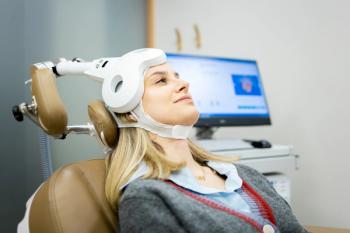
- Vol 37, Issue 3
- Volume 37
- Issue 3
The New Game of Microbiology Clue: The Who, When, Where, and Why of the Novel Coronavirus
Psychiatrists must have a basic understanding of the pathophysiology of coronaviruses in order to be able to accurately explain and discuss those issues with their patients, especially as mental health ramifications are expected.
Starting as a mysterious pneumonia in Wuhan, China, the newly named COVID-19 has resulted in a worldwide outbreak, causing morbidity and mortality as well as potentially disrupting the global economy. The World Health Organization (WHO) has declared this a global pandemic; to date (as this article goes to press), there are more than 80,000 reported cases worldwide (72,506 from Mainland China, Hong Kong, and Macau), and COVID-19 has claimed more than 2700 lives. (For more information, please see
Although pharmaceutical companies and countries are looking into vaccinations and curative treatment for coronavirus infection, currently there is nothing available; thus, precautions against transmission and early supportive treatment is key. Psychiatrists must have a basic understanding of the pathophysiology of coronaviruses in order to be able to accurately explain and discuss those issues with their patients, especially as mental health ramifications are expected.
Exploring the coronavirus: what is it?
Coronaviruses, belonging to the Coronaviridae family, are singleâstranded positiveâsense ribonucleic acid (RNA) viruses that thrive in animals, which are their natural carriers. The only coronaviruses previously known to infect humans were HCoVâ229E, HCoVâOC43, HCoVâNL63, andHKU1, as well as the two infamous relatives of 2019-nCoV-the severe acute respiratory syndrome (SARS) and the Middle East respiratory syndrome (MERS), responsible for outbreaks in 2002-2003 and 2012, respectively. Alphacoronaviruses and betacoronaviruses infect mammals (eg, bats) whereas gammacoronaviruses and deltacoronaviruses are more prone to cause fish and bird infections (Table). Animal to human-zoonotic-transmission is not the norm for coronaviruses, but prior coronavirus outbreaks in animals have been economically damaging.
It is unclear why more zoonotic
In the case of COVID-19, the transmission is
Variations in innate immune response
Why do some people get sicker than others? Coronaviruses have an RNA genome, similar to the influenza virus (responsible for the flu) or the respiratory syncytial virus (RSV). The immune system recognizes the RNA as foreign and triggers the immune response responsible for fighting the virus (ie, production of interferons and pro-inflammatory cytokines), and then clearing the foreign entity out of the body. A review of the exact immune responses are beyond the scope of this manuscript. However, the reader is encouraged to remember that the immune system is highly adaptable and modifies its metabolism and existing balance to fight expected threats (for an excellent review, see Kikkert6). Unfortunately, the virus exploits the host’s immune system, mimicking certain innate components to hide while replicating, which makes the immune system less able to effectively fight the invasion. Viruses may also halt cellular replication and use existing cellular resources to prioritize viral replication. The balance between immune response and viral replicative success ultimately determines disease outcome.
Certain populations are known to be vulnerable to COVID-19, such as infants, the elderly, and those with immunocompromised systems or pre-existing medical issues, who are at increased risk for severe repercussions from infections and, thus, more likely to develop sepsis and possibly death; worse outcomes could also be
Cleaning and disinfection to prevent transmission
Concern arises about transmission between various individuals but also about persistence of the virus on inanimate surfaces, such as mailed packages or in health care settings. As such, WHO has provided a set of recommendations for disinfecting surfaces.9 While the persistence of 2012-nCoV is not fully understood, it has been shown that other strains of coronaviruses stay viable for up to 9 days on surfaces (unless disinfected).
Testing of the recommend WHO formulations against various viruses revealed effectiveness.10 Ethanol, sodium hypochlorite, and glutardialdehyde have been found most effective;11 a concentration of 70% ethanol is adequate for small surface disinfection. Patients inquiring about cleaning should be cautioned about using gloves with bleach (sodium hypochlorite) and other substances. Special attention should be paid to patients with cleaning compulsions, who get skin damage from excessive cleaning product exposure. (The worsening of obsessive-compulsive disorder is discussed in the accompanying article.)
The CDC recommended precautions include the use of a facemask for suspected patients/affected individuals (not for healthy individuals) and hand washing with soap and water for 20 seconds or using any sanitizers with at least 60% alcohol content. This especially should be done after using the restroom; after blowing one’s nose, coughing, sneezing; and before and after eating.
Although the coronavirus may have infected thousands of people, it is important to put its impact into perspective. For instance, according to the CDC, influenza already has affected 19 million people this year alone, hospitalizing 180,000 and killing 10,000 individuals. Thus, although COVID-19 is a serious threat, flu continues to be the major viral respiratory threat, as it has for many decades. Prevention efforts should focus on the flu and highly prevalent infections while also keeping in mind novel outbreaks.
Testing, treatment, and prevention efforts
The presence of COVID-19 can be assessed by a newly released real time reverse transcription-polymerase chain reaction (rRT-PCR) test. Of course, here in the US, clinicians are encouraged to contact and collaborate with their state or local health department for any diagnosed or suspected cases.
While there is no specific treatment for COVID-19, WHO has issued an interim guidance document, which is available online at www.who.int/. Meanwhile, there have been treatment attempts with various antivirals (eg, remdesivir, lopinavir-ritonavir, interferon-α 2b) developed for previously known viral agents. None of these have been studied in randomized controlled trials for COVID-19 and results are of anecdotal quality.
The current
Without specific treatments, the emphasis has been on limiting new exposures, which is where incubation and quarantines come into play. Currently, the incubation period is thought to be 2 to 14 days, so limiting exposure to individuals with suspected infection during that time, and within the active symptom period, is the first and most basic step in preventing further spread of the virus.
The working incubation period takes a few things into consideration. In a systematic review of nine viral agents of public health importance,
Psychiatric and societal implications
The coronavirus has largely dominated the news and the minds of people across the globe for the last month. In the
Disclosures:
Dr Moukaddam is Associate Professor, Menninger Department of Psychiatry and Behavioral Science, Baylor College of Medicine, Ben Taub Adult Outpatient Services Director, Medical Director, STAR (Stabilization, Treatment, and Rehabilitation) Program for Psychosis, Houston, TX. Dr Shah is Professor & Executive Vice Chair, Barbara & Corbin J. Robertson Jr. Chair in Psychiatry at Menninger, Chief of the Division of Community Psychiatry at Baylor College of Medicine. They report no conflicts of interest concerning the subject matter of this article.
References:
1. Caminade C, McIntyre KM, Jones AE.
2. Goneau LW, Mehta K, Wong J, L’Huillier AG, Gubbay JB. Zoonotic Influenza and Human Health-Part 1: Virology and Epidemiology of Zoonotic Influenzas. Curr Infect Dis Rep. 2018;20(10):37.
3. Li Q, Guan X, Wu P, et al.
4. Liu J, Zheng X, Tong Q, et al. Overlapping and discrete aspects of the pathology and pathogenesis of the emerging human pathogenic coronaviruses SARS-CoV, MERS-CoV, and 2019-nCoV. J Med Virol. 2020.
5. Habibzadeh P, Stoneman EK.
6. Kikkert M.
7. Chousterman BG, Swirski FK, Weber GF.
8. Huang C, Wang Y, Li X, et al. Clinical features of patients infected with 2019 novel coronavirus in Wuhan, China. Lancet (London, England). 2020;395(10223):497-506.
9. WHO. Use of disinfectants: alcohol and bleach. Infection prevention and control of epidemic-and pandemic-prone acute respiratory infections in health care. Geneva: WHO;2014.
10. Siddharta A, Pfaender S, Vielle NJ, et al. Virucidal Activity of World Health Organization-Recommended Formulations Against Enveloped Viruses, Including Zika, Ebola, and Emerging Coronaviruses. J Infect Dis. 2017;215(6):902-906.
11. Kampf G, Todt D, Pfaender S, Steinmann E. Persistence of coronaviruses on inanimate surfaces and its inactivation with biocidal agents. J Hosp Infect. 2020.
12. Lessler J, Reich NG, Brookmeyer R, Perl TM, Nelson KE, Cummings DA. Incubation periods of acute respiratory viral infections: a systematic review. Lancet Infect Dis. 2009;9(5):291-300.
13. Serrano I, Gomes D, Ramilo D, et al. An Overview of Zoonotic Disease Outbreaks and its Forensic Management Over Time. J Forensic Sci. 2019;64(5):1304-1311.
Articles in this issue
over 5 years ago
In This Issue of Psychiatric Times: Volume 37, No 3over 5 years ago
When Baby and OCD Are on Board Assessment and Treatment Issuesover 5 years ago
Treatment Nonadherence: An Epidemic Hidden in Plain Sightover 5 years ago
Dear Providerover 5 years ago
Are We Making Any Progress in Treatment and Attitudes?over 5 years ago
Managing Behavioral and Psychological Symptoms of Dementiaalmost 6 years ago
Reframing Our Relationship With Pharmaalmost 6 years ago
We’ve Come a Long Way . . . Or Have We?Newsletter
Receive trusted psychiatric news, expert analysis, and clinical insights — subscribe today to support your practice and your patients.













